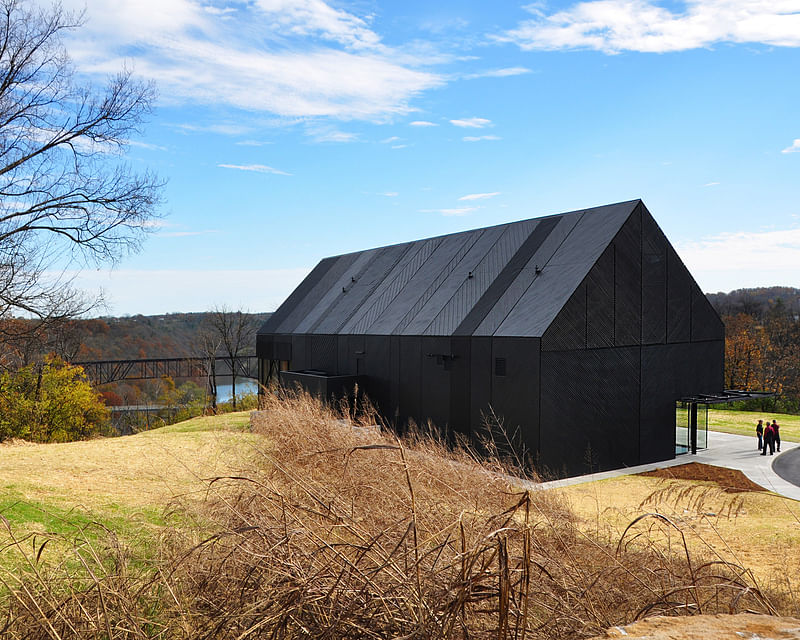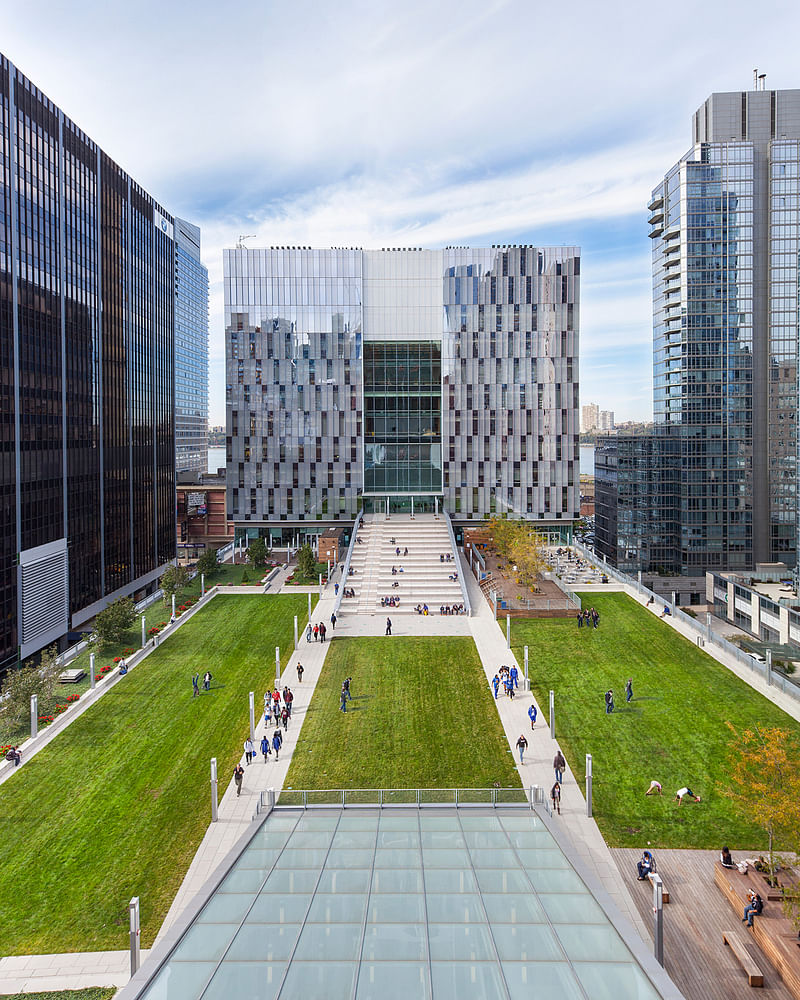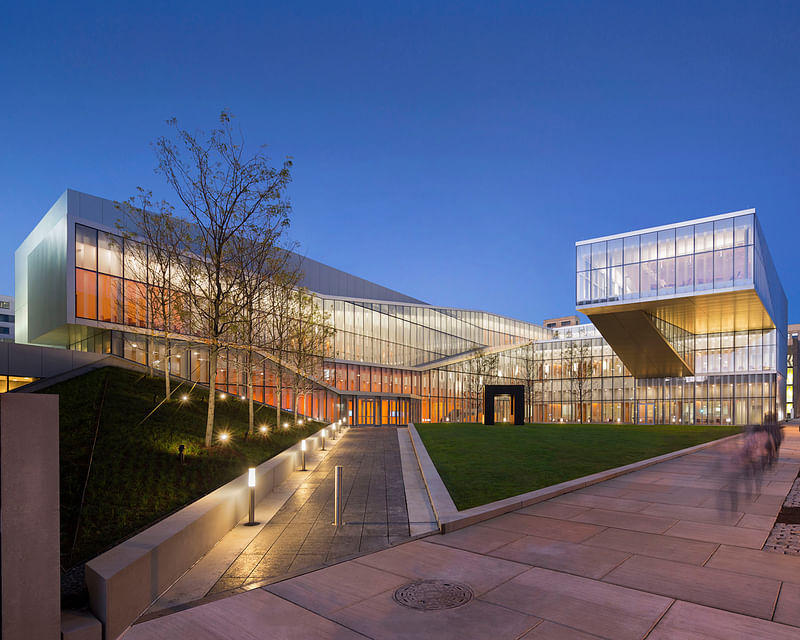2015 AIA Institute Honor Awards recipients - Architecture
By Bustler Editors|
Monday, Jan 12, 2015

Related
Another year has gone by for the AIA Institute Honor Awards, which are considered as the architecture profession's highest recognition of works that symbolize excellence in the categories of architecture, interior architecture, and urban design.
As expected, competition was high. The jury narrowed down this year's submission pool of roughly 500 down to just 23 recipients, who are based throughout the world. The winners will be honored at the AIA 2015 National Convention and Design Exposition in Atlanta.
Check out the winners in the Architecture category below.
Danish Maritime Museum; Elsinore, Denmark
BIG | Bjarke Ingels Group
"The design solution to the site’s inherent dilemmas was to wrap a subterranean museum around a dry dock like a doughnut, where the hole was the dry dock itself and the centerpiece of the museum’s collection. Three two-level bridges span the dry dock, serving as shortcuts to various sections of the museum. All floors slope gently, so that a visitor continually descends further below the water’s edge to learn about Danish maritime lore. The civil engineering and construction work for the museum were among the most complicated ever undertaken in Denmark."

Wild Turkey Bourbon Visitor Center; Lawrenceburg, Kentucky
De Leon & Primmer Architecture Workshop
"Located on a bluff overlooking the Kentucky River, the visitor center is the newest component of recent additions and expansions to the Wild Turkey Distillery Complex, one of seven original member distilleries of the Kentucky Bourbon Trail. The 9,140-square-foot facility houses interactive exhibits, a gift shop, event venues, a tasting room, and ancillary support spaces. Utilizing a simple barn silhouette (an interpretation of Kentucky tobacco barns common to the area), the building, clad in a custom chevron pattern of stained wood siding, presents a clear and recognizable marker in the landscape."

LeFrak Center at Lakeside Prospect Park; Brooklyn, New York
Tod Williams Billie Tsien Architects
"This project restored 26 acres of Brooklyn’s Prospect Park, designed by Frederick Law Olmsted and Calvert Vaux in the 19th century and added a new 75,000-square-foot, year-round skating and recreational facility. In the winter, the facility’s two rinks are open for ice skating, and in the summer one rink converts to roller skating and the other to a large water-play fountain. Clad in rough-hewn gray granite, the new LeFrak Center appears to be large stone retaining walls set in the landscape. Much of the structure is tucked into the land. The L-shaped plan consists of the east and north block, both one-story structures with roof terraces connected by a bridge."

John Jay College of Criminal Justice; New York City
Skidmore, Owings & Merrill LLP
"Located in Manhattan, John Jay College of Criminal Justice’s new building provides all the functions of a traditional college campus within the confines of a single city block. SOM’s 625,000-square-foot addition doubles the size of the college’s existing facilities by adding classrooms, laboratories, auditoriums, faculty offices, and social spaces. These functions are arranged within a new 14-story tower and four-story podium topped with an expansive landscaped terrace that serves as an elevated campus commons. A 500-foot-long cascade runs the length of the podium and functions as the social spine of the campus. SOM’s design places a premium on communal and interactive space so that students may enjoy the experiences of a traditional college setting."

Krishna P. Singh Center for Nanotechnology at the University of Pennsylvania; Philadelphia
WEISS/MANFREDI Architecture/Landscape/Urbanism
"Challenging the established model of laboratory buildings, the Krishna P. Singh Center for Nanotechnology is organized around an ascending spiral that hybridizes the tradition of the campus quadrangle with the public promenade. The Center for Nanotechnology twists its laboratories around a central campus green, opening the sciences to the University of Pennsylvania’s landscape while providing a suite of public spaces within the building for cross-disciplinary collaboration amongst scientists. Here, multiple types—courtyard, laboratory loft, ascending gallery—each with their own distinct histories, are grafted together to create a new, but recognizable hybrid."

28th Street Apartments; Los Angeles
Koning Eizenberg Architecture, Inc.
"The historic YMCA (1926) had been a focus of African-American life in the era of segregation but had fallen into severe disrepair. The design re-establishes the building’s role as a community focus, restores principal spaces for youth training programs, brings existing living quarters in compliance with contemporary standards and adds new housing units. Inventive integration of new building systems released the existing rooftop for outdoor social space that connects and anchors old and new. The new addition is thin and cross-ventilated. It is shaded to the south by a vertical photovoltaic panel array and wrapped to the north with lightweight perforated metal screens that contrast with the heft of the original masonry building."

Cambridge Public Library; Cambridge, Massachusetts
William Rawn Associates, Architects, Inc.; Associate Architect: Ann Beha Architects
"The Cambridge Public Library has become the civic “Town Common” for a city that celebrates and welcomes its highly diverse community (with over 50 languages spoken in its schools). With its all-glass double-skin curtain wall front facade, the library opens seamlessly out to a major public park. This double-skin curtain wall uses fixed and adjustable technologies to ensure that daylight is infused throughout the interiors and to maximize thermal comfort for the most active patron spaces looking out to the park."

Sant Lespwa, Center of Hope; Outside of Hinche, Haiti
Rothschild Doyno Collaborative
"The Center of Hope, commissioned by World Vision, is located in a rural region in Haiti and provides support, education, and skill building opportunities. The design process involved the entire community from children to elders. Construction included on-the-job skills training for over 100 residents. The courtyard scheme and breezeway capture prevailing winds while opening expansive views to the mountains beyond. Careful planning for natural ventilation, daylighting, water collection, sewage treatment, and electricity generation resulted in a completely self-sufficient building. The participatory and empathetic process created an uplifting environment that inspires hope."

California Memorial Stadium & Simpson Training Center; Berkeley, California
HNTB Architecture; Associate Architect: STUDIOS Architecture
"The historic stadium is one of the most beloved and iconic structures on the UC Berkeley campus. The key goals for this project were to restore the stadium’s historic and civic prominence, integrate modern training and amenity spaces, and address severe seismic concerns. By setting the new athlete training facility into the landscape, a new grand 2-acre public plaza for the stadium was created on the roof. A new press box/club crowns the historic wall; its truss-like design acts as a counterpoint to the historic facade."

United States Courthouse, Salt Lake City, Utah
Thomas Phifer and Partners; Naylor Wentworth Lund Architects
"The design of the new United States Courthouse in Salt Lake City emanates from a search for a strong, iconic, transparent, and metaphorically egalitarian form to symbolize the American judiciary system. The primary nature of the courthouse’s cubic mass projects grounded dignity, immovable order, and an equal face to all sides. The 400,000-square-foot, 10-story courthouse resides on a landscaped terrace that spans an entire city block, uniting the new and existing federal courthouses as a public-access amenity while fulfilling a required federal security setback from the street."

Brockman Hall for Physics, Rice University; Houston
KieranTimberlake
"The campus of Rice University is a continuously studied and managed “canvas” that represents an intensive ongoing collaboration between architects, planners, and administrators. Its park-like environment—with live oaks, lawns, walkways, arcades, courtyards, and buildings—comprises a clear and timeless vision. The Brockman Hall for Physics needed to fit within this distinctive setting, to gather together a faculty of physicists and engineers working in as many as five separate buildings, and to house highly sophisticated research facilities carefully isolated from the noise, vibrations, and temperature fluctuations that could destroy experiments."
The 2015 AIA Institute Honor Award for Architecture jury included: Calvin Lewis, FAIA (Chair), Iowa State University; Ray Calabro, FAIA, Bohlin Cywinski Jackson; Nicole Gerou, AIAS Student Representative, Lawrence Technological University; Ana Guerra, Assoc. AIA, Jacobs; Sherri Gutierrez, AIA, Arquitectonica; Jill Lerner, FAIA, Kohn Pedersen Fox; James McDonald, AIA, A&E Architects; Waller McGuire, Executive Director, St. Louis Public Library and Angela O'Byrne, FAIA, Perez.

Share
0 Comments
Comment as :